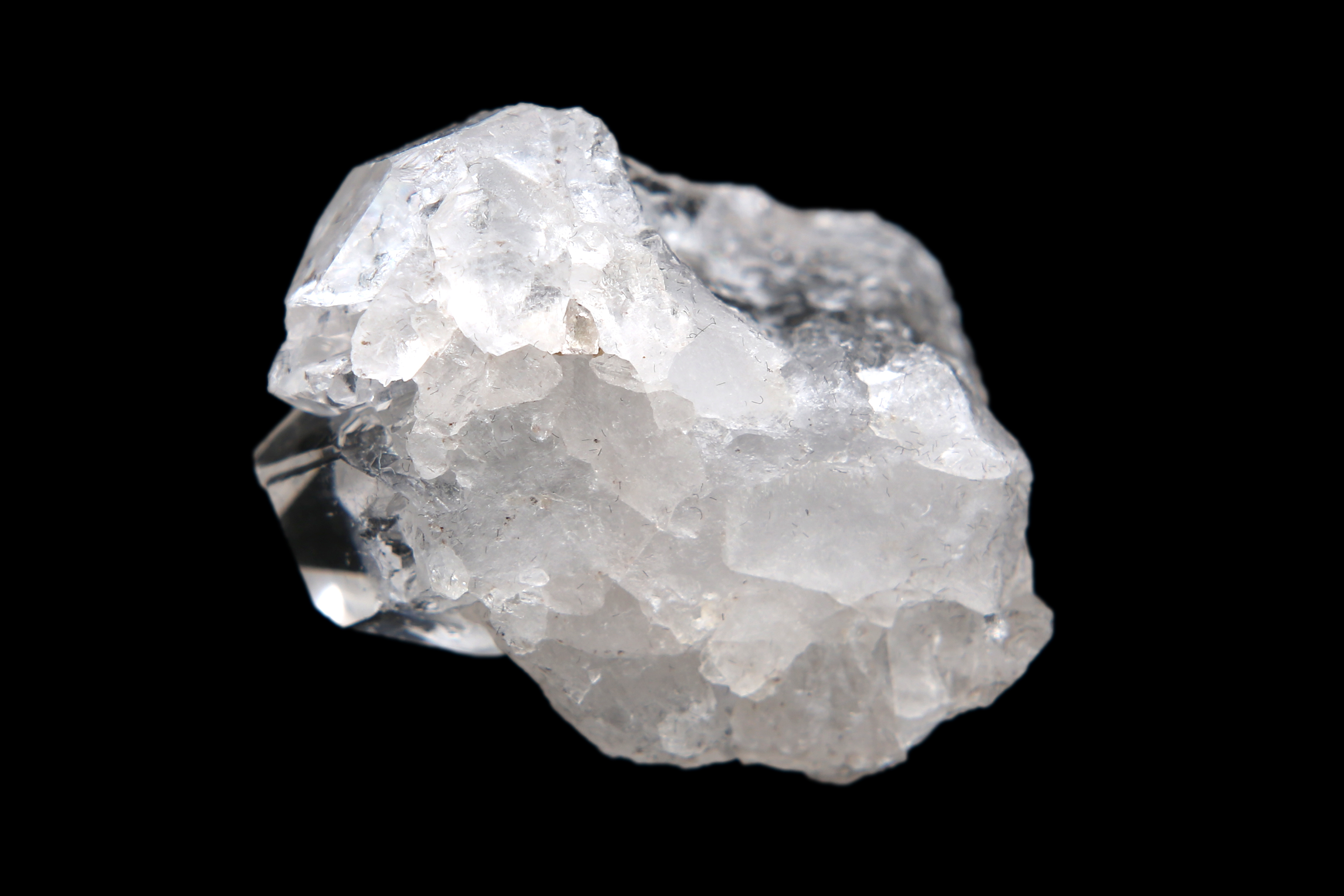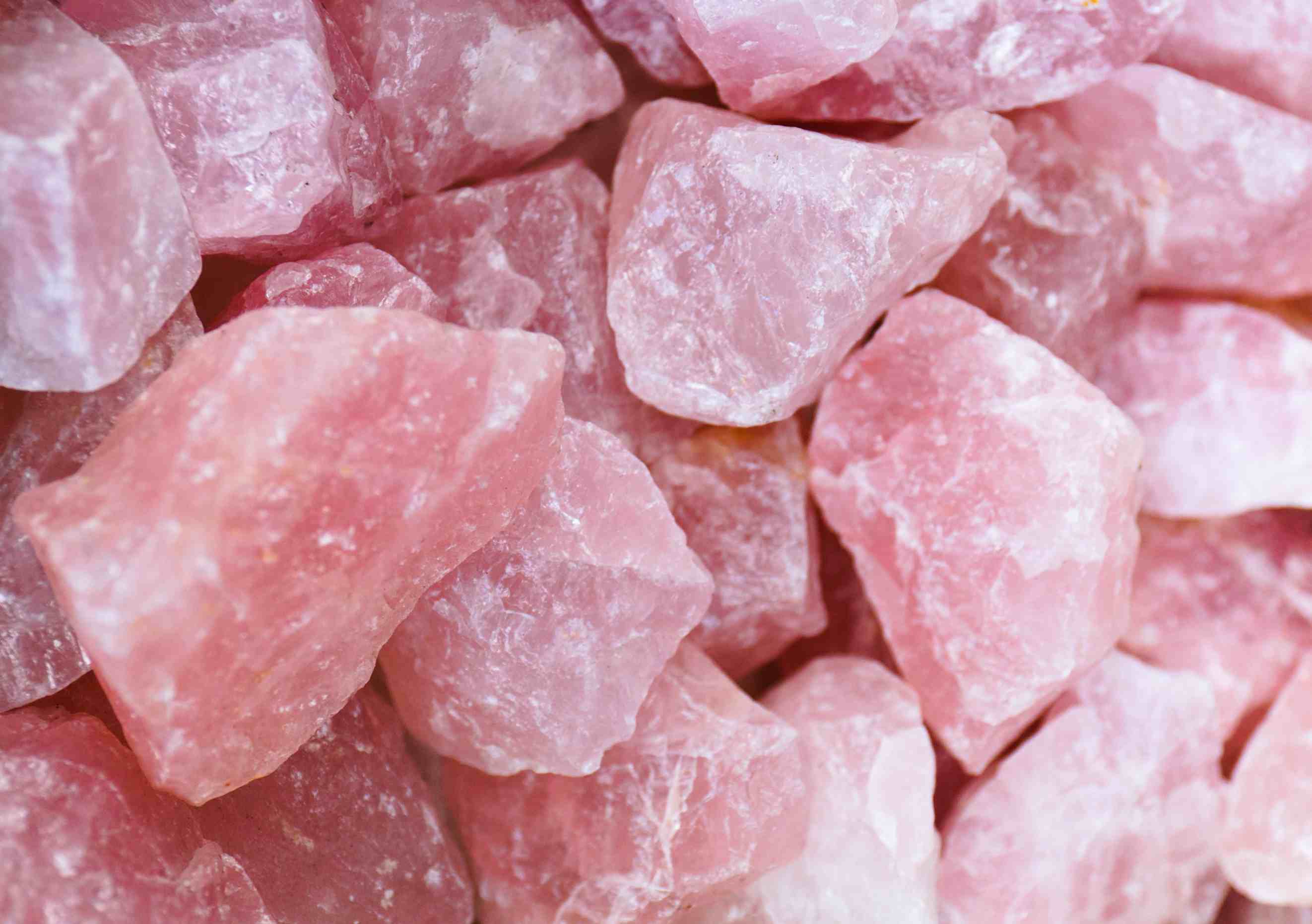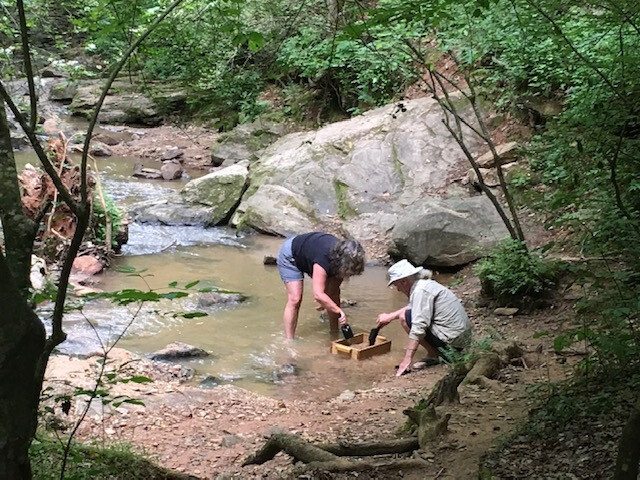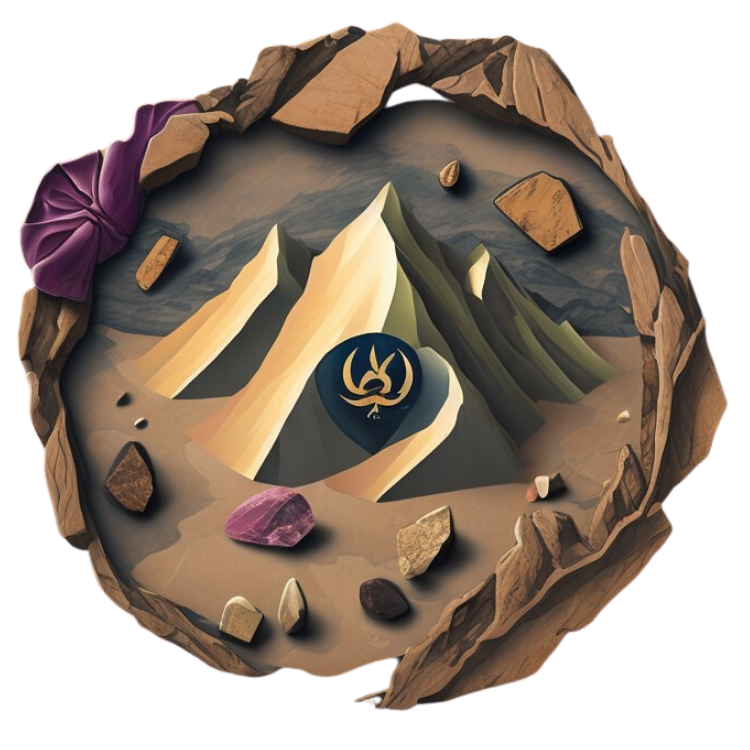The Diverse World of Quartz Gemstones: An In-Depth Exploration
Click here to see our crystal hunting maps
Quartz, the second most abundant mineral in the Earth's continental crust, is a mesmerizing testament to nature's artistry and geological prowess. Its ubiquity, diverse forms, captivating colors, and multitude of uses have earned it a significant place in human history, industry, and adornment. This expanded guide aims to delve deeper into the multifaceted world of quartz, unearthing its geological origins, the captivating array of varieties, the spectrum of colors it displays, its multifaceted uses, and the indelible mark it has left on human civilization.
Quartz: A Geological Marvel
Quartz (SiO2), is a crystalline mineral composed of silicon and oxygen, and is formed through various geological processes, including the cooling and crystallization of magma, the precipitation from hydrothermal fluids, and the transformation of existing rocks under high temperatures and pressure. Its crystalline structure, a continuous framework of SiO4 silicon-oxygen tetrahedra, is responsible for its exceptional hardness (7 on the Mohs scale), durability, and piezoelectric properties.
The Allure of Quartz Varieties: A Symphony of Colors and Forms
Quartz's diversity is one of its most captivating attributes. It occurs in a multitude of varieties, each possessing distinct characteristics in terms of color, transparency, inclusions, and crystal habits. These variations arise due to differences in the geological conditions under which they formed, as well as the presence of trace elements or mineral inclusions.
1. Macrocrystalline Quartz
This category encompasses varieties with visible crystals, often prized for their aesthetic appeal and used in jewelry, carvings, and decorative objects.
- Amethyst: The most popular variety of quartz, amethyst is known for its captivating purple hues, which are caused by iron impurities and natural irradiation. It's often associated with tranquility, spiritual awareness, and clarity of thought. Amethyst is found in various parts of the world, including Brazil, Uruguay, and Zambia.
- Citrine: Ranging from pale yellow to deep amber, citrine is often associated with prosperity, abundance, and positivity. While natural citrine exists, much of the citrine on the market is heat-treated amethyst. Major sources of natural citrine include Brazil, Madagascar, and Spain.
- Smoky Quartz: A translucent to opaque variety of quartz, smoky quartz exhibits a range of colors from light brown to deep black, caused by natural irradiation. It is believed to have grounding and protective properties and is found in various localities, including the Swiss Alps, Scotland, and Madagascar.
- Rose Quartz: A delicate pink variety, rose quartz is associated with unconditional love, emotional healing, and compassion. Its color is caused by trace amounts of titanium, iron, or manganese. Major sources of rose quartz include Madagascar, Brazil, and the United States.
- Rutilated Quartz: One of the most visually striking varieties, rutilated quartz contains needle-like inclusions of rutile (titanium dioxide). These inclusions, often golden or reddish-brown in color, create a mesmerizing effect, resembling shimmering threads or hair within the crystal.

2. Cryptocrystalline Quartz (Chalcedony)
This category includes varieties with microscopic crystals, often used for ornamental and industrial purposes.
- Agate: A banded form of chalcedony, agate is renowned for its diverse colors and intricate patterns, which are formed by the deposition of silica in layers within cavities in volcanic rocks. It's found worldwide, with notable sources in Brazil, Uruguay, and the United States.
- Carnelian: A reddish-orange variety of chalcedony, carnelian has been valued since antiquity for its vibrant color and association with vitality, courage, and creativity. It is found in various localities, including India, Brazil, and Egypt.
- Onyx: A banded variety of chalcedony with alternating black and white layers, onyx has been used for centuries in carvings, cameos, and jewelry. It is often associated with strength, protection, and good fortune.
- Jasper: An opaque variety of chalcedony, jasper comes in a wide range of colors and patterns, often displaying intricate landscapes or abstract designs. It is prized for its beauty and versatility and is used in various forms of jewelry and decorative objects.
Quartz Colors: Nature's Palette
Quartz's color palette is remarkably diverse, spanning from colorless transparency to vibrant hues. These colors are primarily caused by trace element impurities or structural defects within the crystal lattice, making each quartz specimen unique.
- Colorless Quartz (Rock Crystal): The purest form of quartz, rock crystal is valued for its clarity and brilliance. It is often used in optical instruments, electronics, and jewelry.
- Milky Quartz: A cloudy white variety, milky quartz is one of the most common forms of quartz. Its cloudy appearance is caused by microscopic fluid inclusions or bubbles trapped within the crystal lattice.
- Smoky Quartz: Ranging from light brown to deep black, smoky quartz owes its color to natural irradiation from surrounding rocks. The deeper the color, the higher the radiation exposure.
- Amethyst: The iconic purple hues of amethyst are caused by iron impurities within the crystal lattice, as well as natural irradiation. The intensity of the color can vary depending on the amount of iron and the duration of radiation exposure.
- Citrine: Natural citrine's yellow to orange hues are caused by trace amounts of iron. However, much of the citrine available is heat-treated amethyst, which produces similar colors.
- Rose Quartz: The delicate pink of rose quartz is attributed to trace amounts of titanium, iron, or manganese. The intensity of the pink color can vary depending on the concentration of these elements.
- Prasiolite (Green Amethyst): A rare green variety of quartz, prasiolite is often produced by heat-treating amethyst. The green color is caused by the alteration of iron impurities within the crystal lattice.
- Aventurine: Aventurine is a variety of quartz that contains sparkling inclusions of mica or other minerals, such as hematite or fuchsite. These inclusions give aventurine a shimmering or glittery appearance, often referred to as aventurescence.
The Art and Science of Quartz Gemstones
The transformation of rough quartz into faceted gemstones or polished cabochons is a meticulous process that involves a combination of art and science. Skilled artisans use specialized tools and techniques to cut, shape, and polish the stone, maximizing its brilliance, color, and clarity.
The first step involves selecting rough quartz specimens with desirable qualities, such as good color, transparency, and few inclusions. The rough stone is then cut into a preform, which is a rough approximation of the final shape of the gemstone.
The preform is then faceted, a process of cutting and polishing a series of flat faces onto the stone. The angles and proportions of the facets are carefully calculated to maximize the stone's brilliance and fire. Different cuts, such as the brilliant cut, step cut, and emerald cut, can be used to create different visual effects.
After faceting, the gemstone is polished to a high luster, removing any scratches or imperfections and enhancing its overall appearance.

Quartz Crystals: Nature's Geometrical Wonders
Quartz crystals are renowned for their geometric perfection and piezoelectric properties. They grow in a variety of forms, including:
- Prismatic Crystals: These are elongated crystals with six sides and pointed terminations. They are the most common form of quartz crystal and are often found in clusters.
- Druzy Quartz: Druzy quartz is a coating of tiny quartz crystals that form on the surface of a rock or another mineral. It has a sparkly, sugary appearance and is often used in jewelry.
- Scepter Quartz: Scepter quartz crystals have a distinctive shape, with a smaller crystal growing on top of a larger one. They are believed to enhance spiritual growth and connection to higher realms.
- Twinned Crystals: Twinned quartz crystals are formed when two or more crystals grow together in a symmetrical pattern. They are considered to be powerful energy amplifiers and are often used in crystal healing.
Quartz in Jewelry: A Legacy of Adornment
Quartz gemstones have been cherished for their beauty and versatility for centuries. Their wide range of colors, transparency, and affordability have made them a popular choice for jewelry designers and consumers alike. Quartz is used in various types of jewelry, including:
- Rings: Quartz gemstones, especially amethyst, citrine, and smoky quartz, are often used as center stones in rings. They are also used as accent stones or in pavé settings.
- Necklaces: Quartz beads, pendants, and cabochons are popular choices for necklaces. They can be combined with other gemstones or metals to create unique and personalized pieces.
- Earrings: Quartz gemstones are often used in earrings, either as studs, dangles, or hoops. Their versatility allows them to be incorporated into both casual and formal styles.
- Bracelets: Quartz beads or gemstones can be strung together to create bracelets, or they can be set in metal bangles or cuffs.
Quartz in History: A Stone of Many Roles
Quartz has played a prominent role in human history, serving various purposes across different cultures and eras.
- Ancient Tools and Weapons: Due to its hardness and ability to fracture with sharp edges, quartz was used by ancient civilizations to create tools such as arrowheads, spear points, scrapers, and knives.
- Spiritual and Healing Practices: In many cultures, quartz crystals were revered for their purported spiritual and healing properties. They were used in rituals, ceremonies, and meditation practices to promote clarity, balance, and connection to higher realms.
- Jewelry and Adornment: Quartz gemstones have been used in jewelry for millennia, valued for their beauty, durability, and affordability. Ancient Egyptians, Romans, and Greeks adorned themselves with quartz jewelry, and the tradition continues to this day.
- Quartz in Technology: The piezoelectric properties of quartz crystals have revolutionized modern technology. They are used in oscillators, resonators, and filters in electronic devices such as watches, radios, televisions, and computers. Quartz is also used in the production of optical instruments, such as lenses and prisms.
Quartz Localities: A Global Treasure Trove
Quartz is a ubiquitous mineral, found in various geological settings around the world. However, some regions are particularly renowned for their exceptional quartz deposits, producing specimens of remarkable quality, size, and beauty.

- Brazil: Brazil is a world-renowned source of quartz, particularly amethyst, citrine, and rutilated quartz. The state of Minas Gerais is home to some of the largest amethyst deposits in the world, producing crystals of exceptional size and clarity.
- Madagascar: Madagascar is another significant producer of quartz, known for its rose quartz, smoky quartz, amethyst, and rutilated quartz. The island's unique geology has given rise to a variety of quartz formations, including massive deposits and stunning crystal clusters.
- United States: The United States is home to several notable quartz localities, producing amethyst, smoky quartz, rose quartz, and other varieties. Arkansas is famous for its quartz crystals, while North Carolina is known for its emerald-green quartz, also known as hiddenite.
- Russia: Russia has a long history of quartz mining, producing a variety of quartz gemstones, including aventurine, amethyst, and smoky quartz. The Ural Mountains are a major source of quartz, with numerous mines and deposits scattered throughout the region.
Caring for Quartz: Preserving its Beauty
Quartz is a relatively durable gemstone, but it requires proper care to maintain its luster and prevent damage. Here are some tips for caring for quartz jewelry and decorative objects:
- Cleaning: Clean quartz with warm soapy water and a soft brush. Avoid using harsh chemicals or abrasive cleaners, as they can scratch the surface of the stone. For delicate or intricate pieces, it's best to consult a professional jeweler for cleaning.
- Storage: Store quartz jewelry separately from other gemstones to prevent scratching. Wrap each piece in a soft cloth or place it in a separate compartment in a jewelry box.
- Protection from Heat and Chemicals: Quartz is sensitive to high temperatures and harsh chemicals, so avoid exposing it to direct sunlight or household cleaning products.
- Professional Inspection: It's recommended to have quartz jewelry professionally inspected and cleaned periodically to ensure that it remains in good condition.
The Enduring Allure of Quartz
Quartz, with its myriad forms, colors, and applications, continues to captivate and inspire. Its geological origins, rich history, and modern-day uses make it a mineral of endless fascination. Whether you're drawn to the vibrant hues of amethyst, the shimmering inclusions of rutilated quartz, the intricate patterns of agate, or the geometric perfection of quartz crystals, the world of quartz offers a treasure trove of beauty, wonder, and discovery.
As you embark on your own exploration of the diverse world of quartz, may you be enchanted by its timeless allure and discover the unique magic that each quartz specimen holds.
